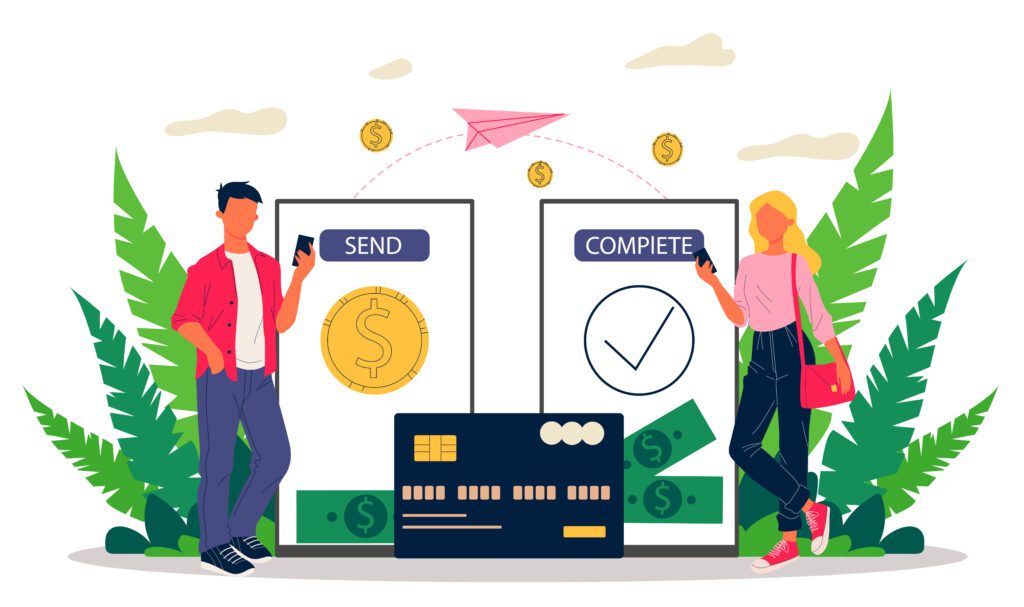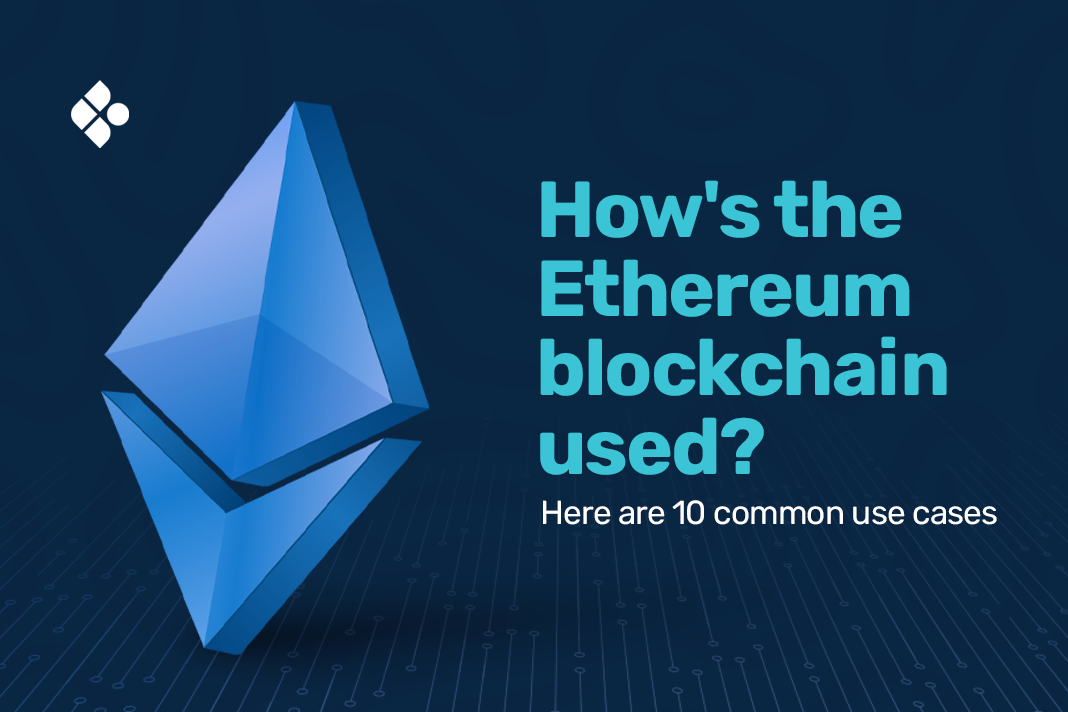Have you heard that the Ethereum blockchain is at the forefront of innovations in Web3, but you’re not sure how it can be applied to the real world? Or maybe you’re familiar with Ethereum’s native token, Ether (ETH), but have abstract knowledge of what the blockchain can do.
As we discuss the most common Ethereum blockchain use cases, prepare to be enlightened. At first glance, here are the top ten:
- Decentralised Finance (DeFi) Applications
- Non-fungible tokens (NFTs) and Digital Collectibles
- Smart Contracts and DApps
- Identity and Self-Sovereign Identity (SSI)
- Supply Chain Management and Traceability
- Gaming
- Energy and Carbon Emissions Tracking
- Healthcare Data Management
- Governance and DAOs (Decentralized Autonomous Organizations)
- Cross-Border Payments and Remittances
These use cases refine how we interact with the various sectors by giving us more independence and control. Want to see precisely how the Ethereum blockchain drives these innovations? I’ll discuss them in depth in this post. Take a read.
Top 10 Most Common Ethereum Blockchain Use Cases
- Decentralized Finance (DeFi) Applications
DeFi is what Ethereum is most popularly known for. These applications are built on the blockchain and don’t conform to traditional financial systems.
These applications are transparent, immutable, cost-effective and secure. They are open to anyone, anywhere, regardless of how much money they have. The codes are also open source, ensuring it is safe and open to inspection.
Any transaction recorded on the Ethereum blockchain cannot be reversed or changed. This contributes to the high level of transparency and security. DeFi applications are also way cheaper than traditional services because they don’t operate with the same level of control and tight regulations.
The most popular DeFi applications are:
- Decentralised exchanges (DEXs): Allow trading without needing a centralised exchange
- Lending and borrowing platforms: Allows users to lend and borrow cryptocurrencies.
- Stablecoins: reduce volatility and make DeFi applications more accessible.
- Non-fungible tokens (NFTs) and Digital Collectibles

NFTs are digital assets unique to what they represent and cannot be replicated or replaced by another asset. People use NFTs to represent their ownership of assets like artworks, collectibles, real estate, in-game elements, and even precious metals like gold.
Ethereum is the most popular blockchain technology that mints and trades NFTs. This makes it easy to create a secure and transparent market. It also makes it convenient to transfer ownership of assets on the blockchain.
- Smart Contracts and DApps
Smart contracts are self-executing contracts that are recorded on the Ethereum blockchain. So, imagine that you want to contract a freelance developer to build your company’s website. A smart contract can be developed to make this seamless for both of you.
In this smart contract, you state the terms and conditions. Then, the agreement will be automatically fulfilled when the contract terms are met.
With this in place, there’s no need to rely on the integrity of the third party, and business can go on smoothly.
Decentralised applications (DApps), on the other hand, run on decentralised networks like Ethereum. They are not under any central control and are open source. DApps can be used for various purposes like:
- DeFi
- NFTs
- Voting
- Healthcare, etc.
- Identity and Self-Sovereign Identity (SSI)
Now, more than ever, people are protective of their identity online. And rightfully so, our identity gives us access to many services and verifies who we are.
However, identity systems are controlled by centralised institutions, which are flawed, leaving us vulnerable to identity thefts, unauthorised access, etc.
This is where Self-sovereign identity (SSI) comes into play. It is an approach that gives us control over our digital identity. This data can be stored on the Ethereum blockchain, and we can choose those we want to share it with.
You can use SSI for voting, healthcare, financial services, travel, employment, etc.
- Supply Chain Management and Traceability
It is called supply chain management when you plan, organise, and control the movement of goods and services from the source/suppliers to the customers. Traceability is tracking the flow of goods and services through the supply chain.
The Ethereum blockchain plays a massive role in improving the supply chain and traceability in many ways. Due to its nature as a transparent ledger, all transactions are open access. It is also secure as it is difficult to be tampered with, making it almost impossible for fake goods to enter the supply chain.
The Ethereum blockchain is also efficient and can automate repetitive tasks that waste time and save costs on manual labour. The Ethereum blockchain is already being used by big companies like Walmart and IBM in supply chain management.
- Gaming
The Ethereum blockchain is already being integrated into the gaming industry in many ways, like NFTs and DeFi applications. NFTs can be in-game assets that can be sold and traded, like real-world assets. NFTs are often created on the blockchain using smart contracts.
The Ethereum blockchain is transparent, decentralised, and secure, improving the gaming experience and eliminating the fear of fraud or cheating.
Some popular games on the blockchain are Axie Infinity, The Sandbox, Gods Unchained, Decentraland, etc.
- Energy and Carbon Emissions Tracking
With the awareness of how important environmental sustainability is, tracking the impact of many activities on our environment has become essential. The Ethereum blockchain can also track how much energy is consumed and carbon emissions. Transportation, manufacturing, mining, etc., are energy-intensive and must be tracked.
Ethereum uses blockchain oracles to connect to external data sources like weather and energy reports to ensure the accuracy of the data.
- Healthcare Data Management
Health records are sensitive information that should be stored securely to avoid data breaches or leaks. This is why the Ethereum blockchain is instrumental in safeguarding healthcare data. This minimises the people who have access to just professionals, patients, and researchers.
Blockchain oracles connect Ethereum to data sources outside the blockchain to smoothen the experience and ensure accuracy. In addition to being transparent, efficient, and secure, the Ethereum blockchain is also interoperable. Interoperability means that these healthcare data can be shared between different systems.
- Governance and DAOs (Decentralized Autonomous Organizations)
Governance is how decisions are made in an organisation, and the Ethereum blockchain plays a vital role in creating governance systems that are more efficient than standard systems.
Smart contracts run Decentralised Autonomous Organizations (DAOs) on the blockchain, and the rules guiding that organisation can not be changed as it is embedded in code.
Governance and DAOs allow organisations to take a more community approach to decision-making, which protects the organisation’s integrity.
- Cross-Border Payments and Remittances

Sending money across different countries can be challenging, considering the expense, slow transaction process and currency differences. However, the Ethereum blockchain eliminates all these problems.
Different DApps available on the blockchain tackle these problems by providing a cost-effective, speedy, transparent, and secure alternative and Ethereum’s native token, ETH, is used to make these transactions.
You can sell those ETH tokens at the best exchange rate in Nigeria and Ghana using the Breet app. The Breet platform is user-friendly and can automatically deposit your cash (Naira or Cedis) in your bank account.
Frequently Asked Questions (FAQs) About the Top 10 Most Common Ethereum Blockchain Use Cases
What makes Ethereum different from other blockchains?
Ethereum is a robust blockchain leading in setting trends in Web3 by exploring other options besides cryptocurrency. It is also the first blockchain to support smart contracts and decentralised applications (DApps).
Ethereum is also designed to scale beyond its current capabilities and adapt to processing large amounts of transactions. This blockchain technology is interoperable because data and assets can be exchanged with other blockchains.
What is the main advantage of Ethereum over Bitcoin?
Although Ethereum and Bitcoin are the two biggest cryptocurrencies, they’re as different as day and night.
Bitcoin was created to replace traditional currencies and used as an exchange for value. But, Ethereum was designed to support smart contracts and decentralised applications.
Ethereum also has a rich and diverse community of developers, enterprises, and regular users. This active community always promotes the blockchain, builds on it, and improves it.
What is Ethereum most known for?
Ethereum is most popular due to its smart contracts and DApps. These innovative features explore how Web3 can be used and make people less reliant on traditional and controlled authorities.
Does Ethereum have a future?
From all indications, we can conclude that Ethereum has a bright future. Due to the constant evolution of the technology and its community of active developers and users, Ethereum will keep improving.
What gives Ethereum value?
Ethereum’s value comes from several factors, they are:
- Utility: Ethereum can be used to create DApps that are more secure than traditional applications. The more DApps on the blockchain, the more value Ethereum has.
- Community: With many users and developers on the Ethereum network, it’s clear that ETH is highly valued.
- Adoption: Like Bitcoin, Ethereum is also being accepted as payment by many businesses and institutions.
Conclusion
These ten use cases of the Ethereum blockchain give us a lot of insight into what the blockchain is about, and you, too, can be a part of it —whether as a regular user, developer, or enterprise.
With the evolution of the Ethereum blockchain, it’s a great idea to be a part of it now. Just ensure to do your research and safety checks beforehand.
Best of luck!
